Email sales@AllianceChemical.com for 24/7 Expert Support
-
512-365-6838
-
Hydrogen Peroxide 15% Technical Grade
Category : Bases
$12.94
Liquid error (snippets/product-blocks line 100): divided by 0
Off
Unit price
/
Shipping Notice: Possible Hazmat Fees
💡 Smart Shipping Tip: Quart & Liter Sizes Often Avoid Hazmat Fees
This size may be classified as hazmat and can incur additional carrier fees. See shipping guide
- ✅ Good news: 1 Quart containers qualify as "Limited Quantity" and bypass hazmat rules
- 💡 Pro tip: Order multiple 1 Quart containers to avoid hazmat fees entirely
- 💰 Hazmat fees can get expensive - especially for larger containers (carrier charges, not our markup)
- 🚚 Ground shipping only - no expedited options for sizes over 1 Qt/1L
Required by 49 CFR § 173.150 for chemical containers larger than 1 quart. Actual fees shown at checkout. View our complete shipping guide →
✅ Great Choice! No Hazmat Fees
1 Quart containers qualify as "Limited Quantity" and avoid hazmat shipping fees.
- 🚀 Faster shipping: Eligible for expedited shipping options including air transport
- 💰 No hazmat fees: Ships as "Limited Quantity" per DOT regulations
- 📦 Convenient size: Perfect for testing or smaller applications
- ♻️ Smart choice: Order multiple quarts to get the volume you need without hazmat charges
Exempted under 49 CFR § 173.150 Limited Quantity provisions for containers ≤1 liter/quart. Learn more in our shipping guide →
Quantity
Size:
Variation:
-
$12.94Delivery every$12.29
-
$15.32Delivery every$14.55
-
$18.54Delivery every$17.61
-
$22.63Delivery every$21.50
-
$21.02Delivery every$19.97
-
$29.56Delivery every$28.08
-
$47.23Delivery every$44.87
-
$1,440.31Delivery every$1,368.29
-
$80.92Delivery every$76.87
-
$307.37Delivery every$292.00
-
$2,065.51Delivery every$1,962.23
-
$183.12Delivery every$173.96
-
$451.96Delivery every$429.36
-
$1,345.61Delivery every$1,278.33
-
$1,492.34Delivery every$1,417.72
-
$1,701.27Delivery every$1,616.21
$12.94
Liquid error (snippets/product-sticky-blocks line 69): divided by 0
Off
Unit price
/
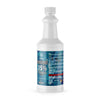
Hydrogen Peroxide 15% Technical Grade
$12.94
Liquid error (snippets/sticky-product line 56): divided by 0
Off
Unit price
/
Size:
Variation:
-
$12.94Delivery every$12.29
-
$15.32Delivery every$14.55
-
$18.54Delivery every$17.61
-
$22.63Delivery every$21.50
-
$21.02Delivery every$19.97
-
$29.56Delivery every$28.08
-
$47.23Delivery every$44.87
-
$1,440.31Delivery every$1,368.29
-
$80.92Delivery every$76.87
-
$307.37Delivery every$292.00
-
$2,065.51Delivery every$1,962.23
-
$183.12Delivery every$173.96
-
$451.96Delivery every$429.36
-
$1,345.61Delivery every$1,278.33
-
$1,492.34Delivery every$1,417.72
-
$1,701.27Delivery every$1,616.21
Ask a question
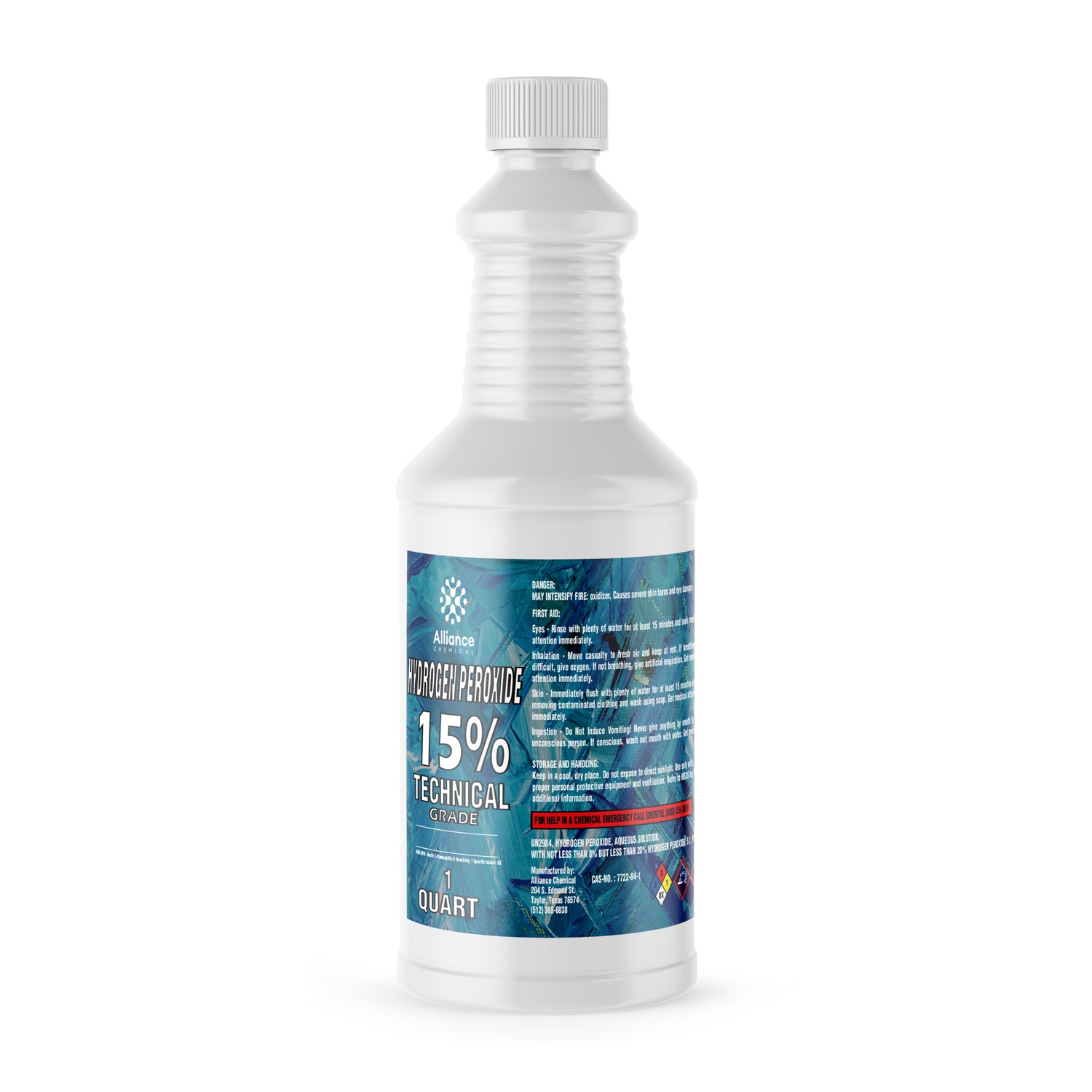
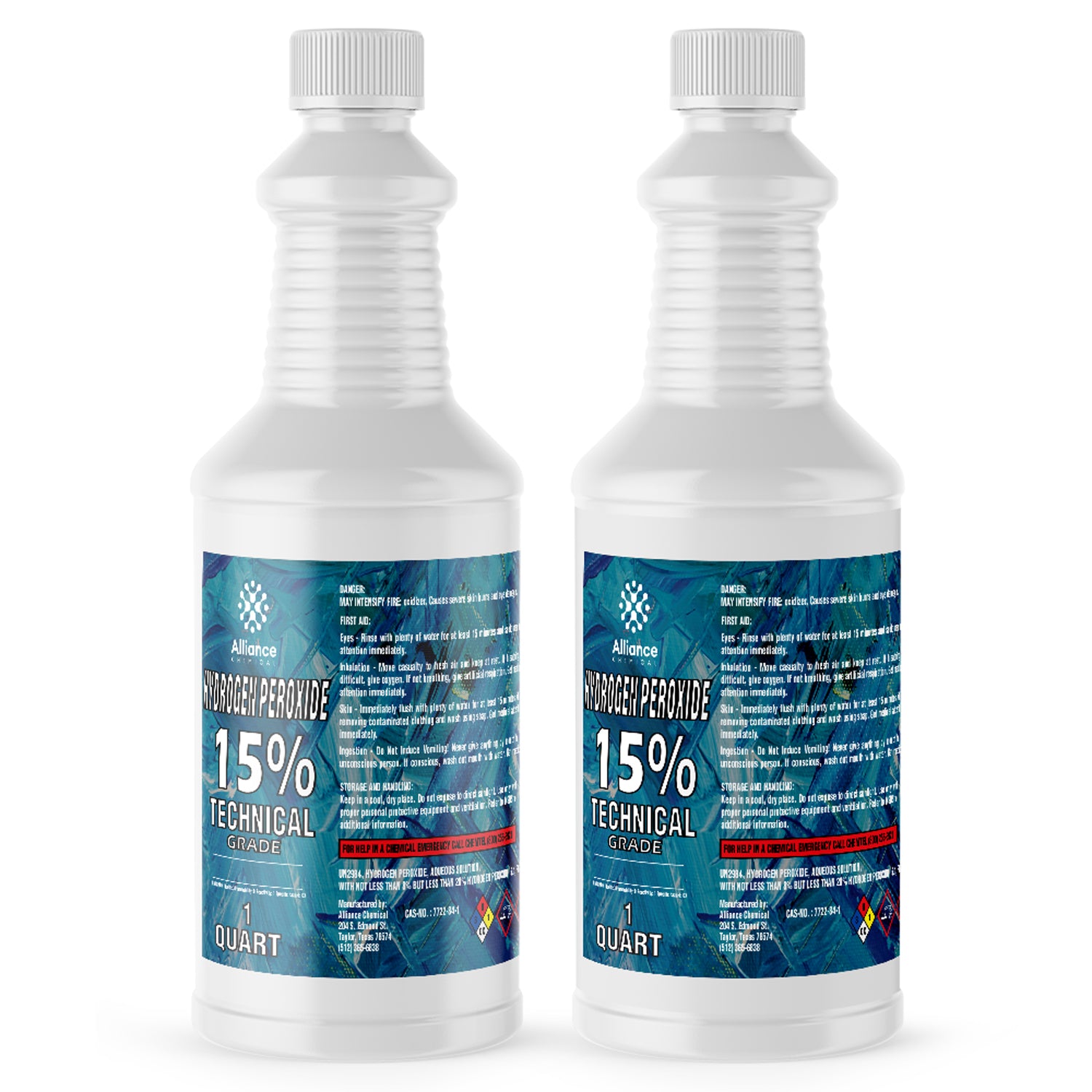
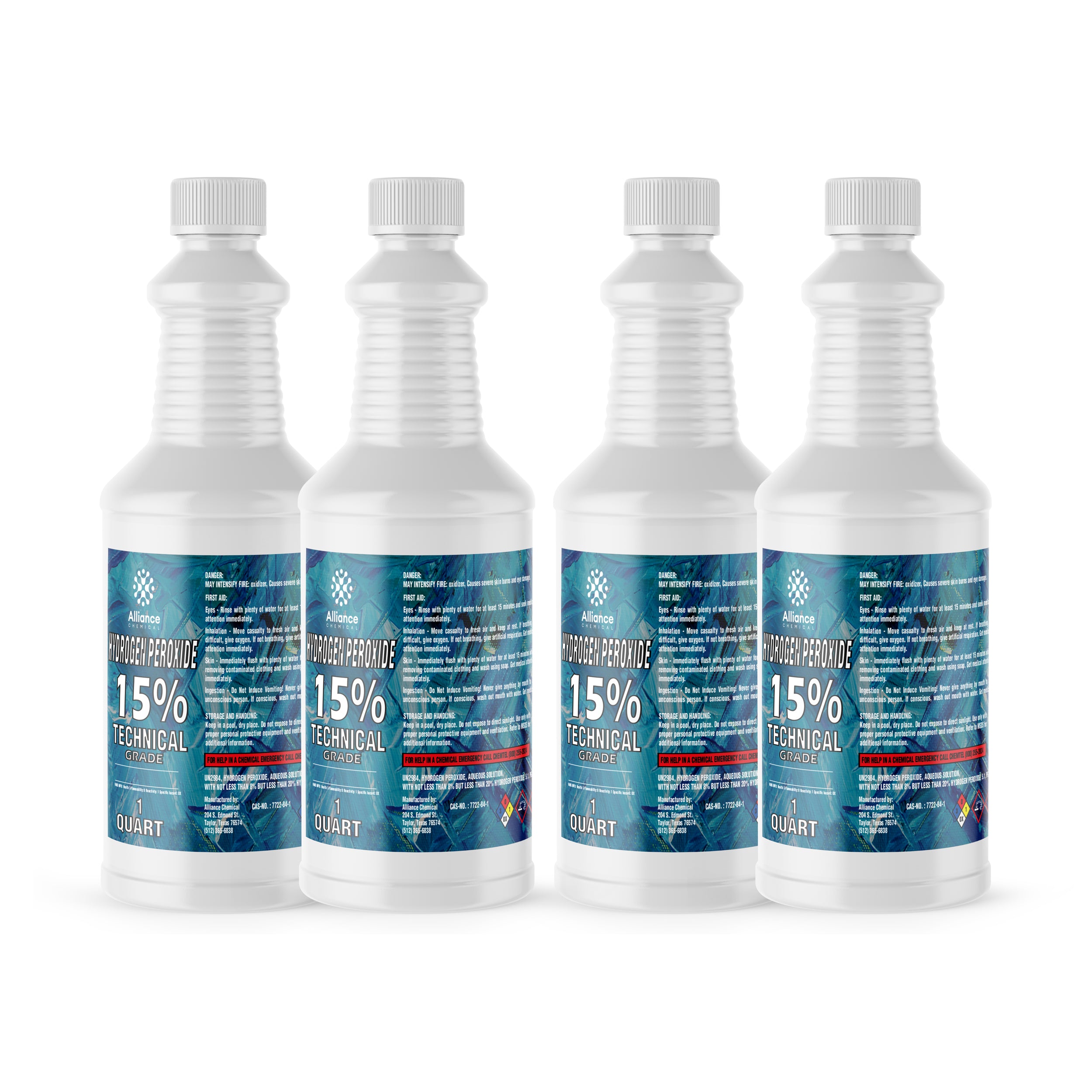
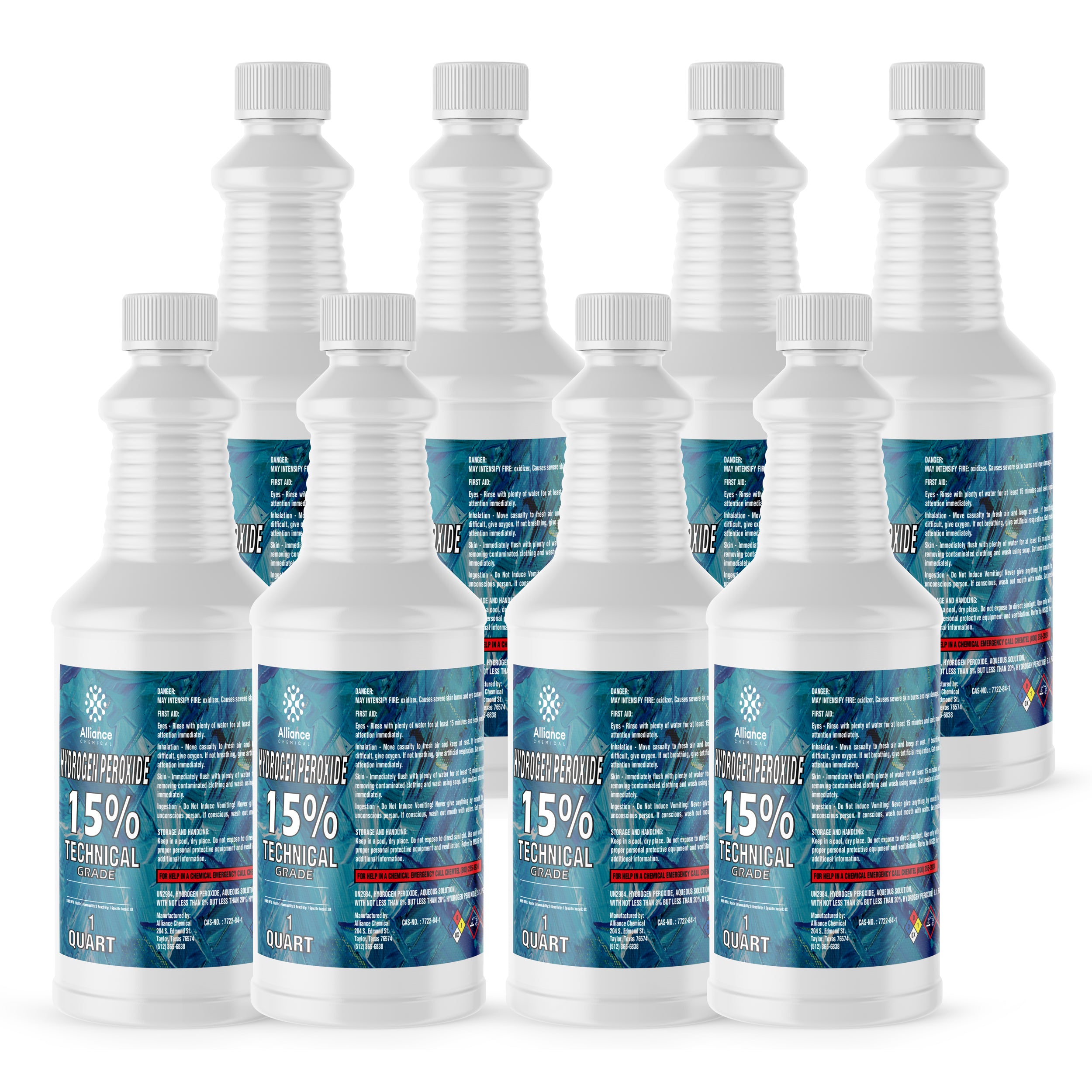

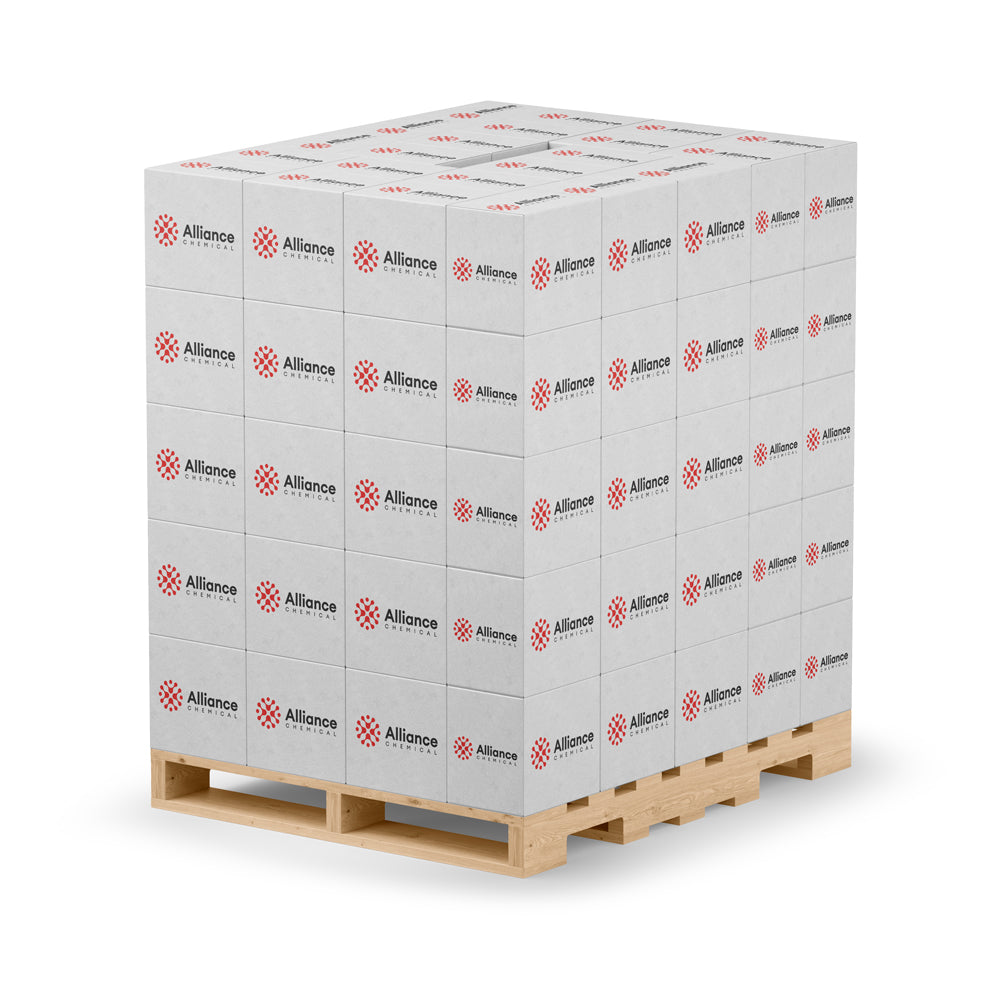
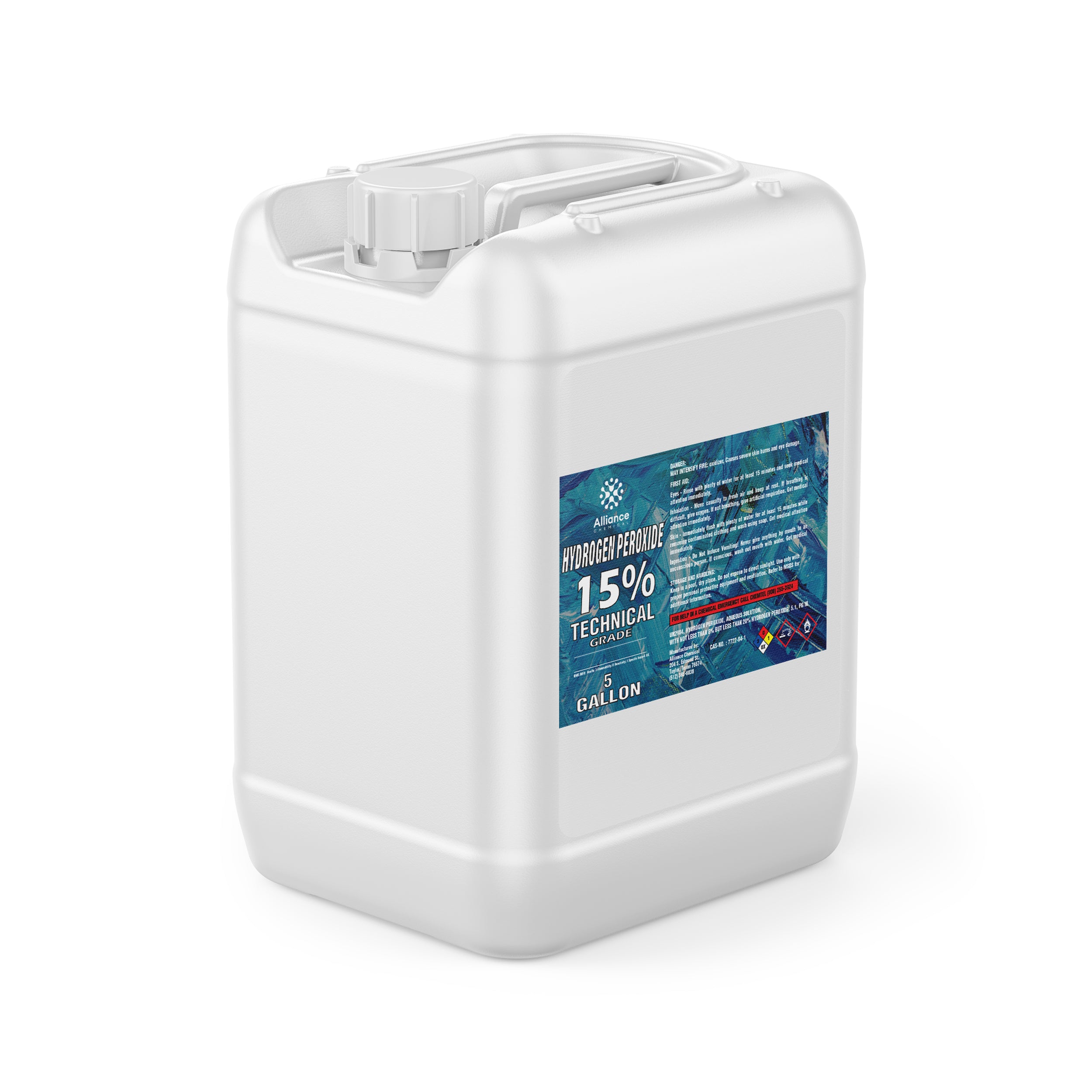
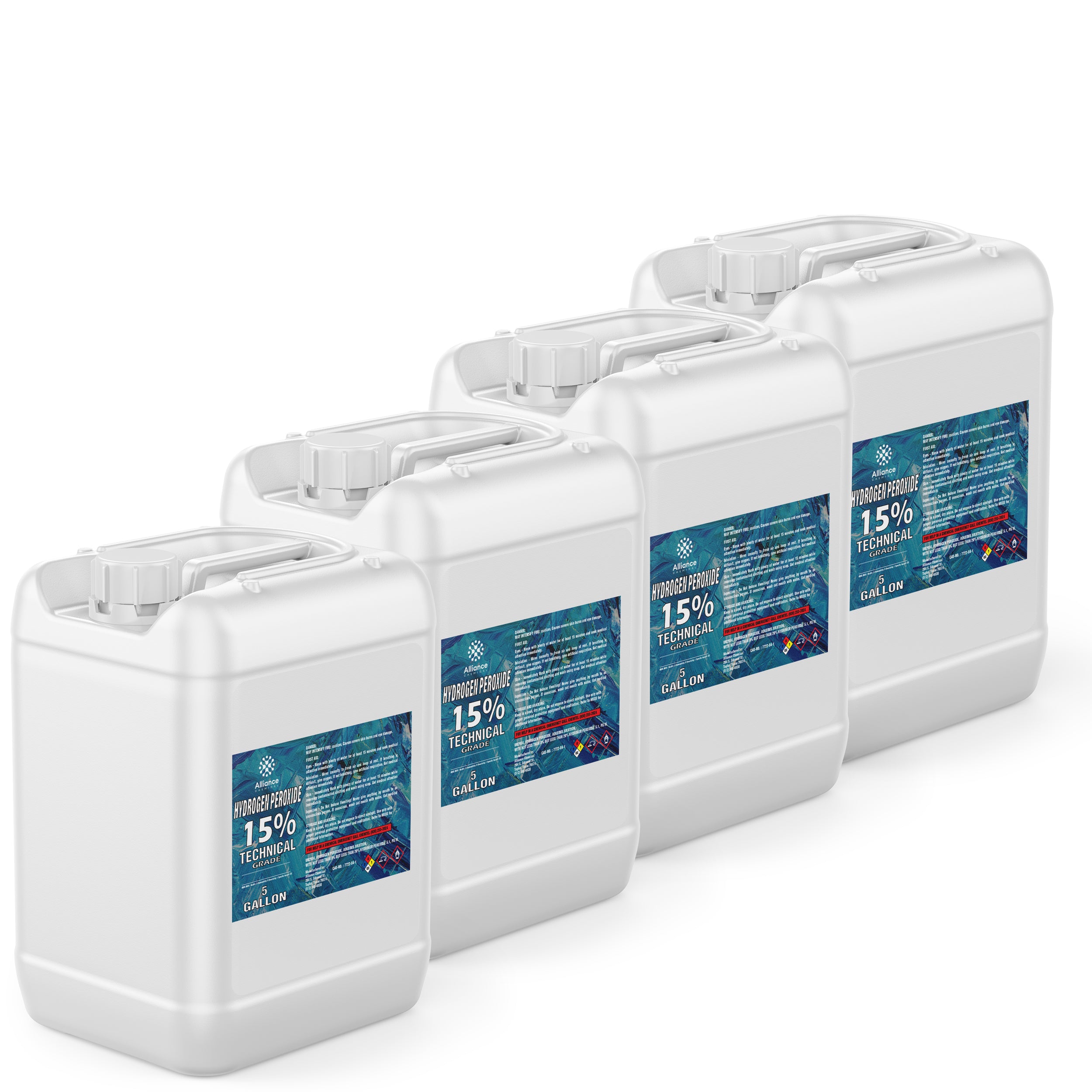
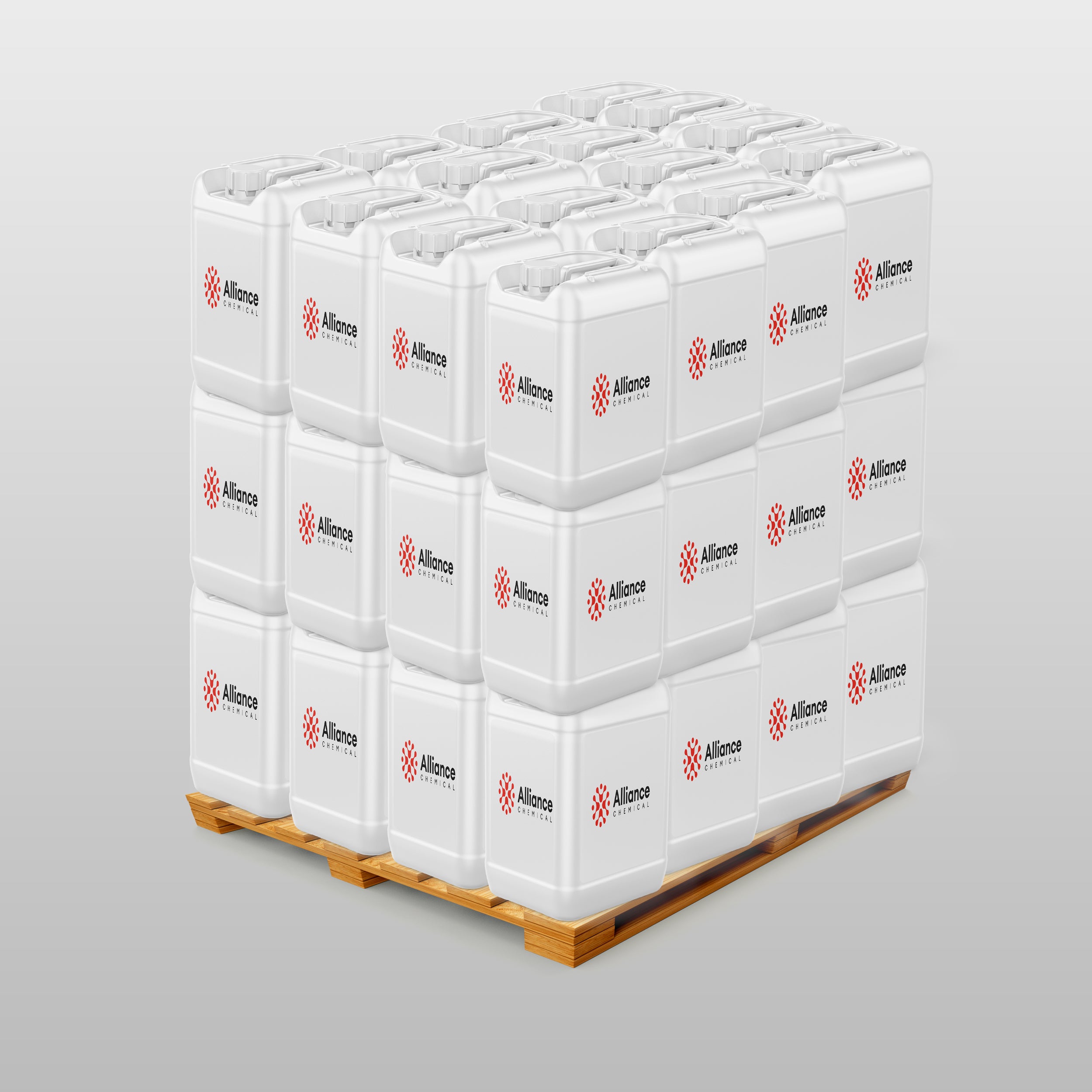

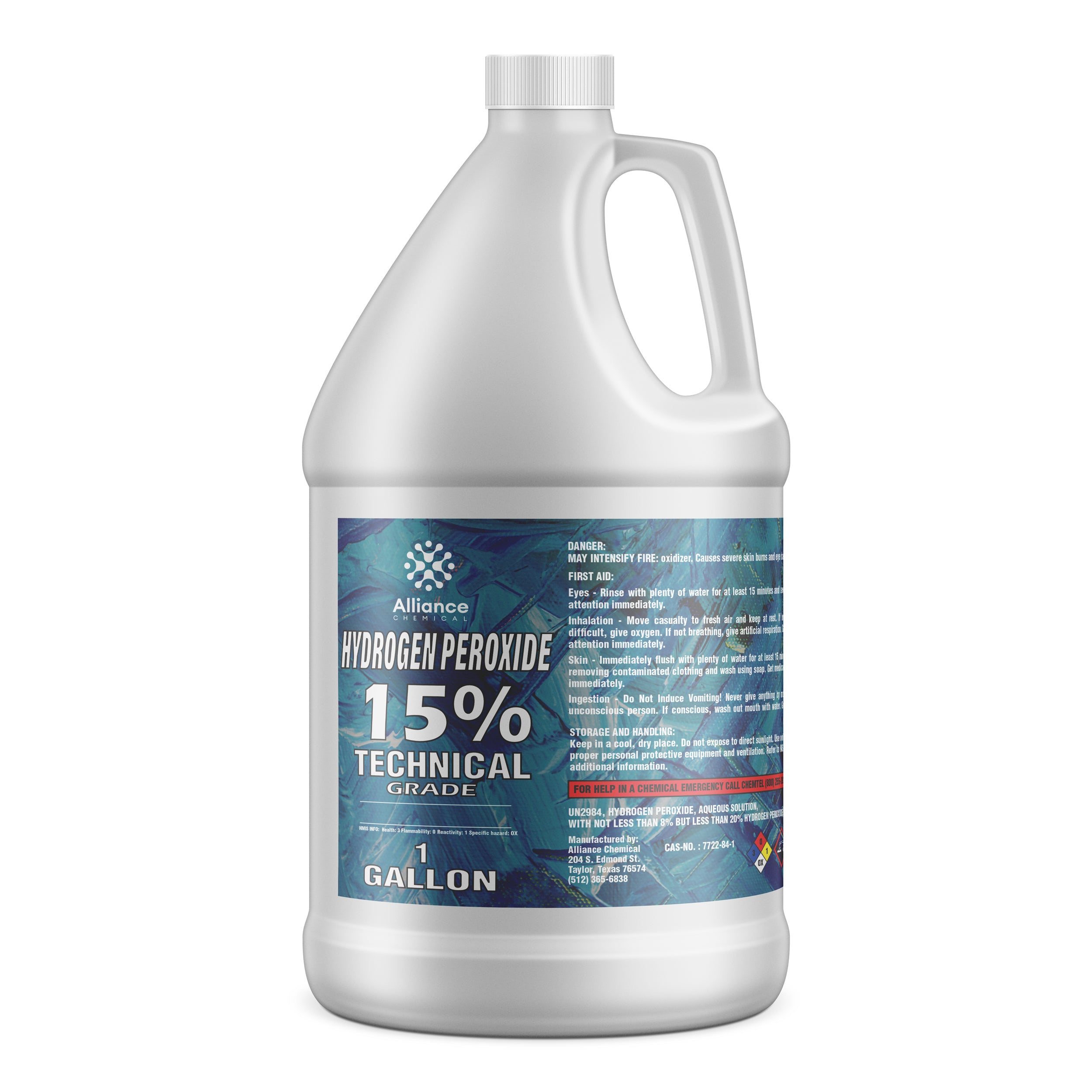
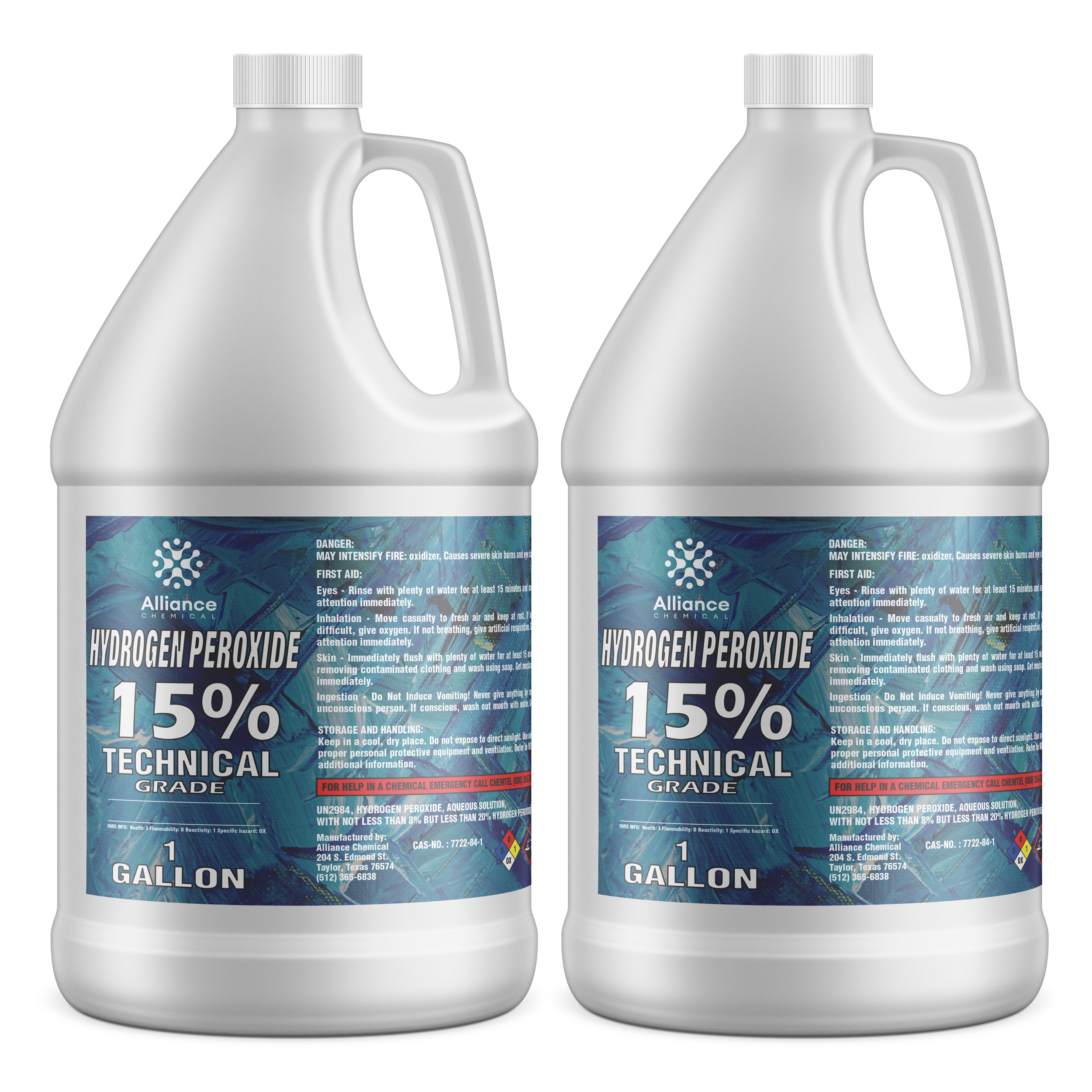
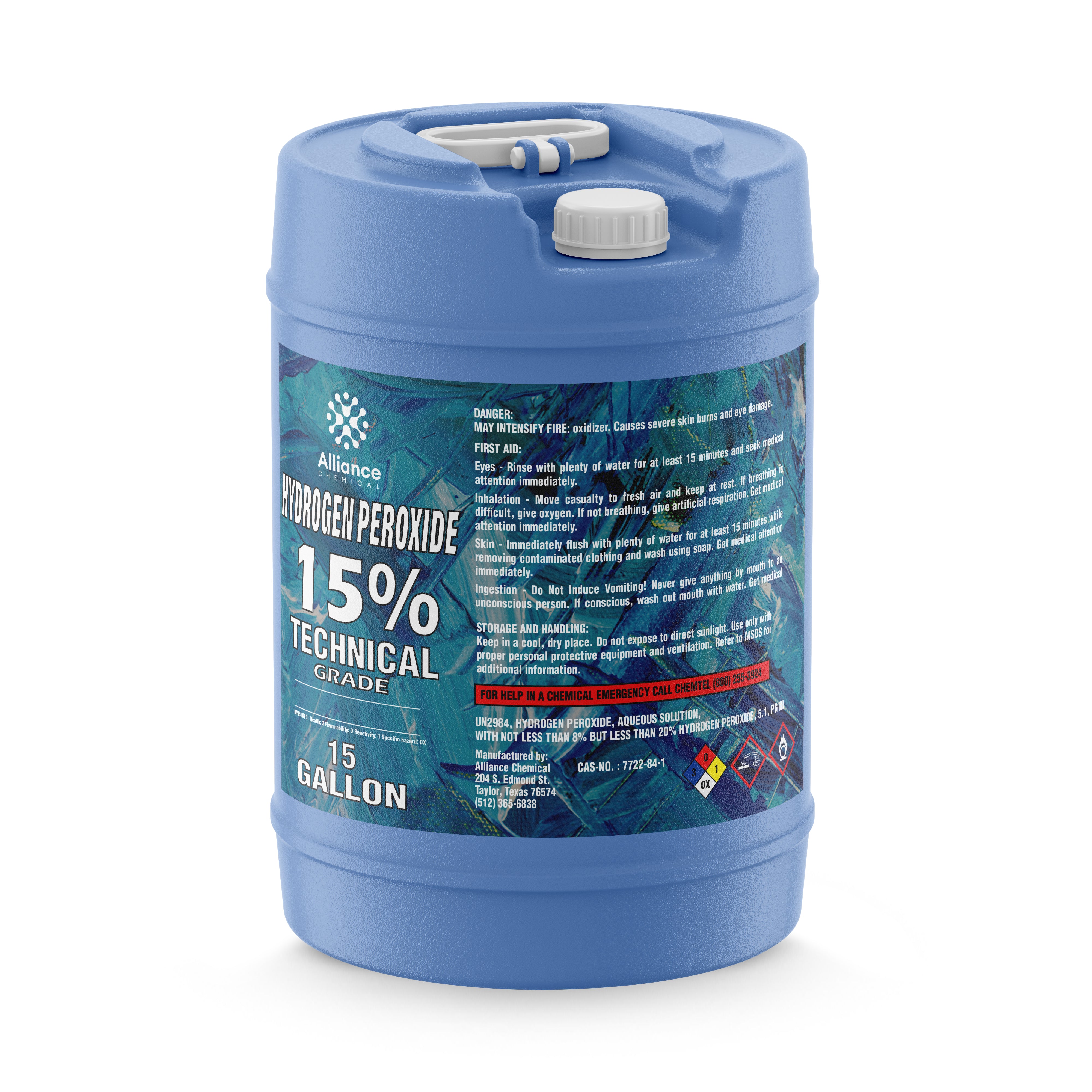
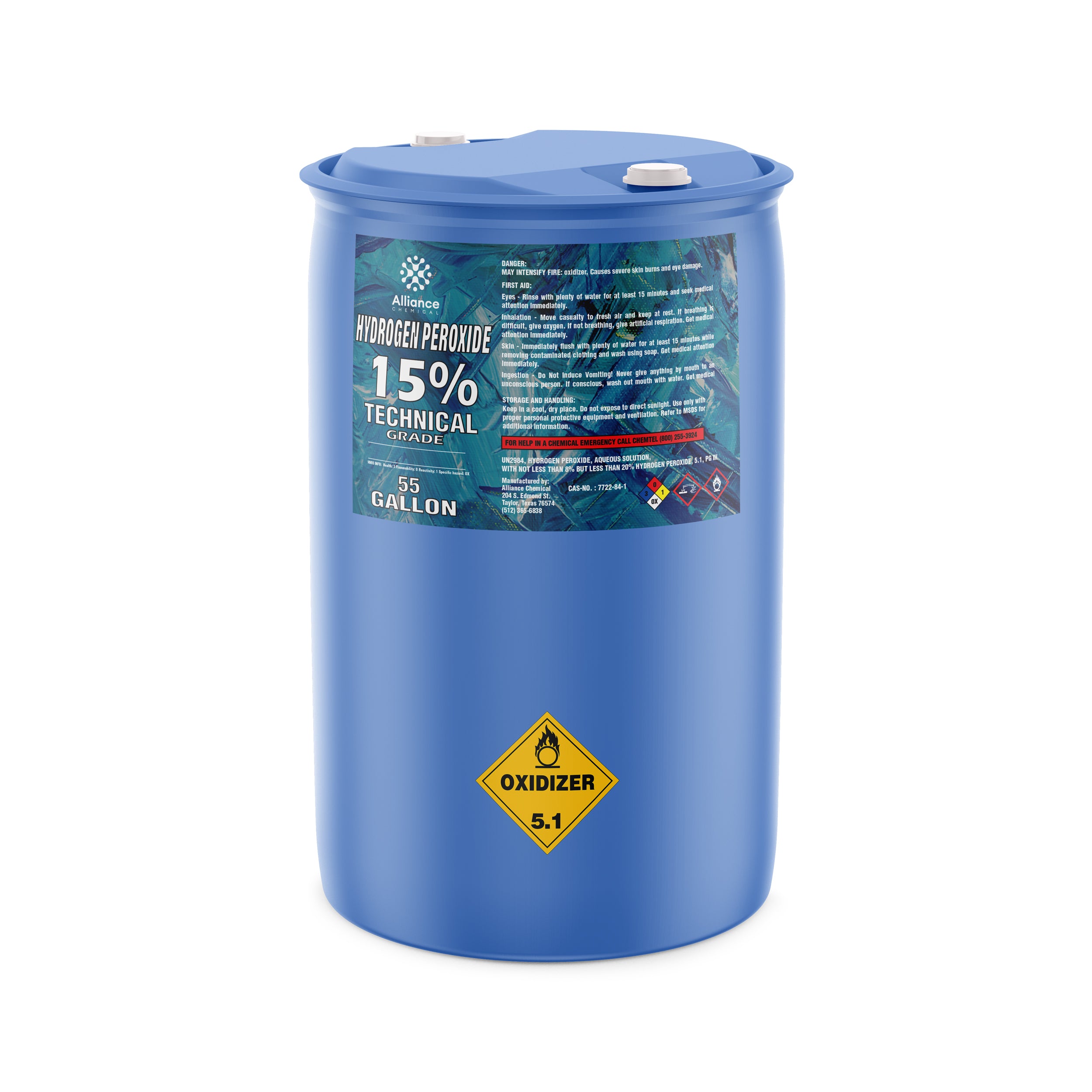
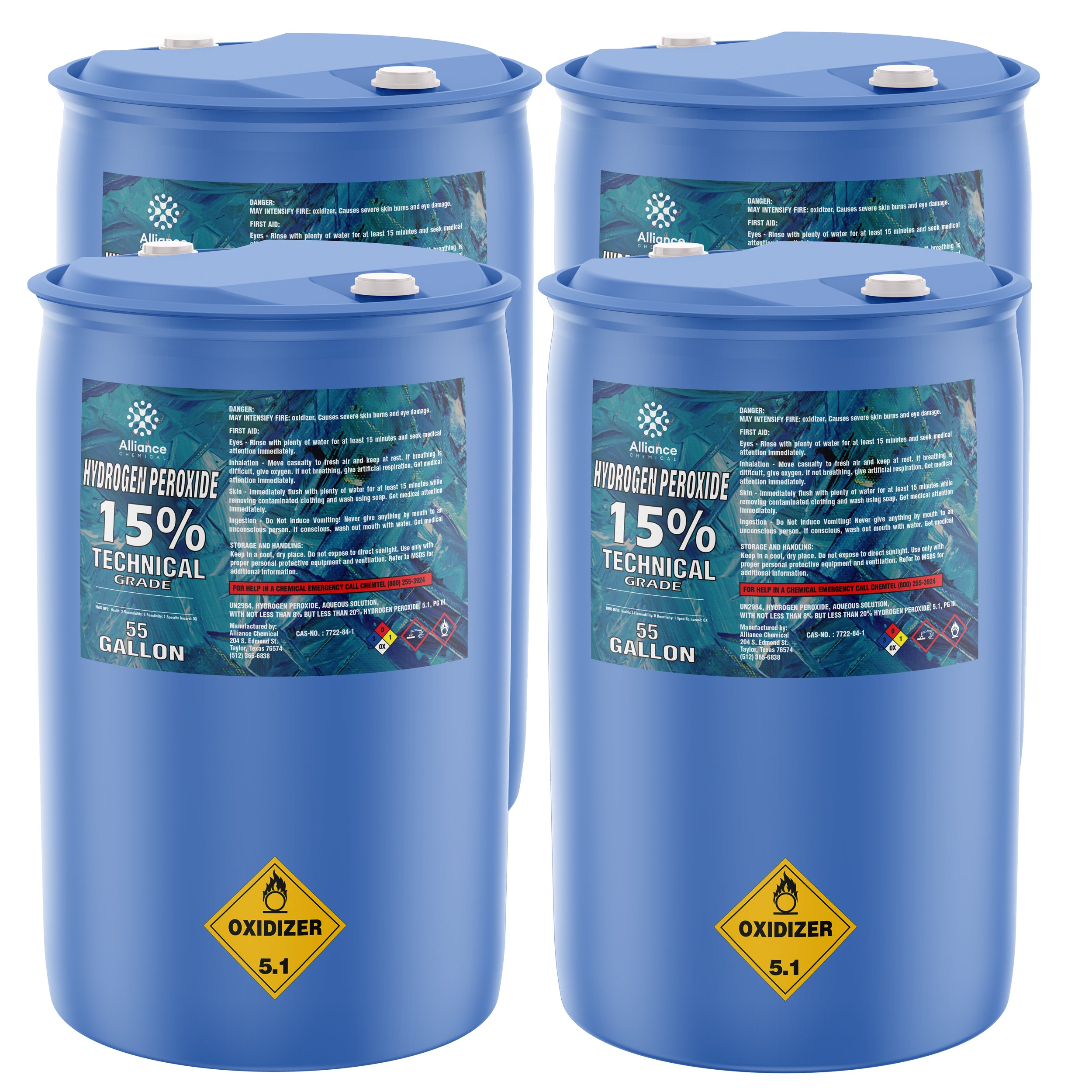
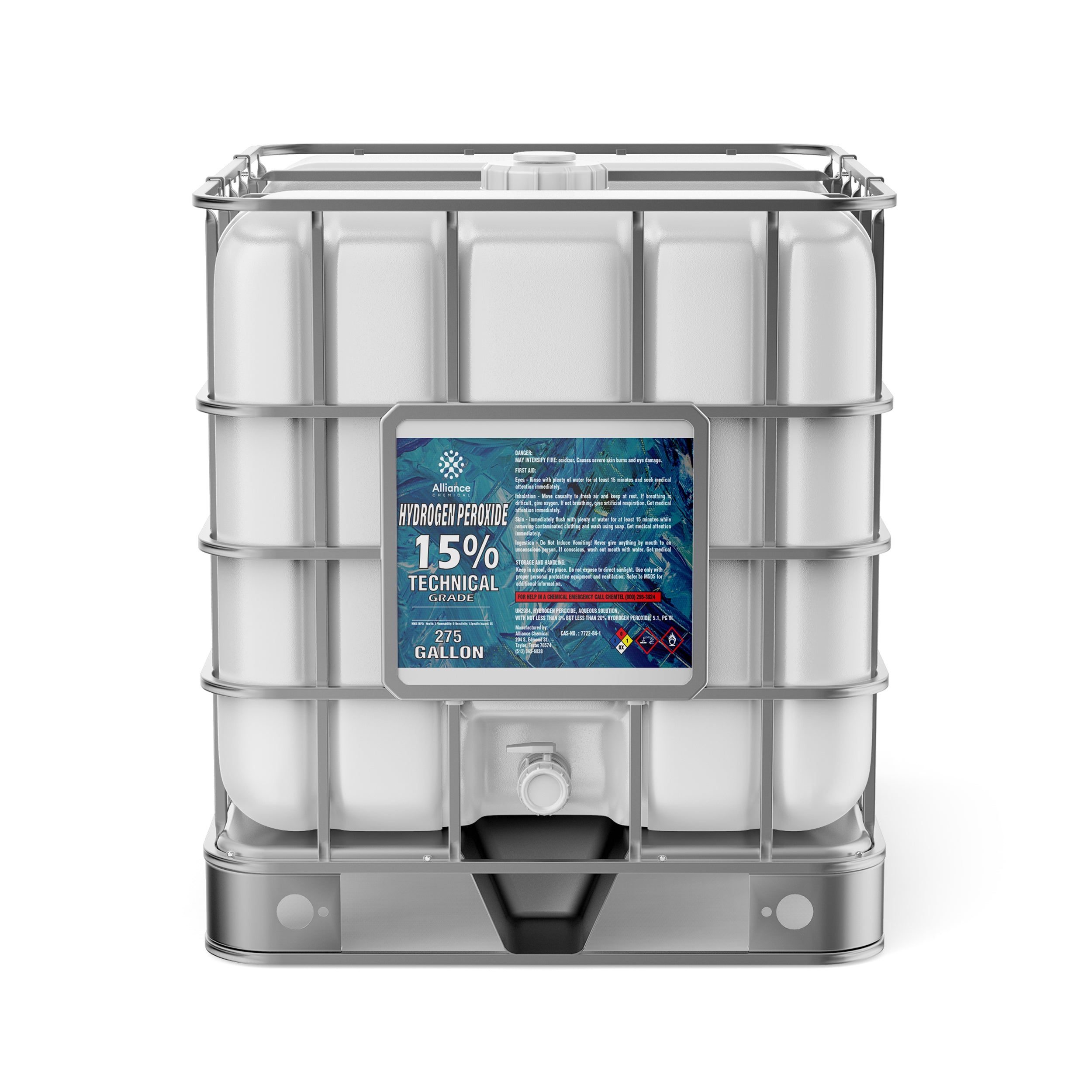

- Description
- Product Documents
Product Overview
Hydrogen Peroxide 15% Technical Grade (H₂O₂, also known as Peroxide) is a clear, colorless liquid formulated for industrial applications requiring strong oxidizing capabilities. This technical-grade solution provides reliable performance for chemical synthesis, bleaching, and process water treatment. The assay is strictly controlled between 14.5–15.5 wt% via iodometric titration to ensure consistent reaction kinetics in manufacturing environments.
As a versatile reagent, Hydrogen Peroxide 15% is utilized in metal finishing, textile processing, and effluent treatment. The solution features a low impurity profile with stringent controls on trace metals (Iron, Copper, Manganese) to prevent catalytic decomposition and protect processing equipment. This product is designed specifically for industrial use and is not intended for food, drug, or cosmetic applications.
Key Properties
- Chemical Formula: H₂O₂
- CAS Number: 7722-84-1
- Concentration: 14.5% – 15.5% wt
- Grade: Technical
- Appearance: Clear, colorless liquid
- Specific Gravity (20°C): 1.11–1.12
- Boiling Point: 151.2°C
- Residue After Ignition: Max 0.05%
- Color (APHA): Max 40
Common Applications
- Industrial Oxidation: Drives oxidation-reduction reactions in chemical manufacturing and material modification.
- Water Treatment: Used in industrial water systems for contaminant oxidation, pH adjustment support, and effluent management.
- Bleaching Agent: Effective for color removal and whitening in textile, pulp, and paper processing.
- Surface Preparation: Utilized in metal finishing and cleaning formulations to remove organic residues.
- Chemical Synthesis: Acts as a reagent in organic synthesis for selective oxidation steps.
Safety Precautions
Hydrogen Peroxide 15% is a strong oxidizer. Store in a cool, vented area away from direct sunlight, combustibles, and reducing agents to prevent decomposition. Use only vented containers made of compatible materials such as HDPE or glass. Operators must wear appropriate Personal Protective Equipment (PPE), including chemical-resistant gloves, splash goggles, and protective clothing to prevent skin and eye contact.
Refer to the Safety Data Sheet (SDS) for detailed handling, storage, and emergency procedures. In the event of a spill, contain with inert absorbents. If contact occurs, rinse thoroughly with water and seek medical attention if irritation persists.
Benefits
High Oxidizing Potential – Efficiently drives chemical reactions and bleaching processes.
Technical Grade Purity – Low trace metal content minimizes equipment corrosion and unwanted catalytic reactions.
Versatile Utility – Suitable for a wide range of industrial applications from wastewater treatment to manufacturing.
Bulk Availability – Scalable packaging options from 1 quart bottles to 330-gallon totes.
Related Products
| Property | Value |
|---|---|
| Molecular Weight | 34.01 g/mol |
| Formula | H2O2 |
| Assay | 15% |
| Grade | Technical |
| Form | Liquid |
| Solubility | Miscible with water, soluble in many organic solvents |
| Appearance | Clear, colorless liquid |
| Melting Point | -0.43 °C |
| Boiling Point | 150 °C |
| Specific Gravity | 1.04 |
| Industry | Industrial, Environmental, Healthcare |
Other top rated products

















X4V-3GH-QPD
$12.94
Liquid error (snippets/product-blocks line 100): divided by 0
Off
Unit price
/
Shipping Notice: Possible Hazmat Fees
💡 Smart Shipping Tip: Quart & Liter Sizes Often Avoid Hazmat Fees
This size may be classified as hazmat and can incur additional carrier fees. See shipping guide
- ✅ Good news: 1 Quart containers qualify as "Limited Quantity" and bypass hazmat rules
- 💡 Pro tip: Order multiple 1 Quart containers to avoid hazmat fees entirely
- 💰 Hazmat fees can get expensive - especially for larger containers (carrier charges, not our markup)
- 🚚 Ground shipping only - no expedited options for sizes over 1 Qt/1L
Required by 49 CFR § 173.150 for chemical containers larger than 1 quart. Actual fees shown at checkout. View our complete shipping guide →
✅ Great Choice! No Hazmat Fees
1 Quart containers qualify as "Limited Quantity" and avoid hazmat shipping fees.
- 🚀 Faster shipping: Eligible for expedited shipping options including air transport
- 💰 No hazmat fees: Ships as "Limited Quantity" per DOT regulations
- 📦 Convenient size: Perfect for testing or smaller applications
- ♻️ Smart choice: Order multiple quarts to get the volume you need without hazmat charges
Exempted under 49 CFR § 173.150 Limited Quantity provisions for containers ≤1 liter/quart. Learn more in our shipping guide →
Size:
Variation:
-
$12.94Delivery every$12.29
-
$15.32Delivery every$14.55
-
$18.54Delivery every$17.61
-
$22.63Delivery every$21.50
-
$21.02Delivery every$19.97
-
$29.56Delivery every$28.08
-
$47.23Delivery every$44.87
-
$1,440.31Delivery every$1,368.29
-
$80.92Delivery every$76.87
-
$307.37Delivery every$292.00
-
$2,065.51Delivery every$1,962.23
-
$183.12Delivery every$173.96
-
$451.96Delivery every$429.36
-
$1,345.61Delivery every$1,278.33
-
$1,492.34Delivery every$1,417.72
-
$1,701.27Delivery every$1,616.21
Compare Products
| Price |
|---|
| SKU |
| Rating |
| Discount |
| Vendor |
| Tags |
| Weight |
| Stock |
| Short Description |
